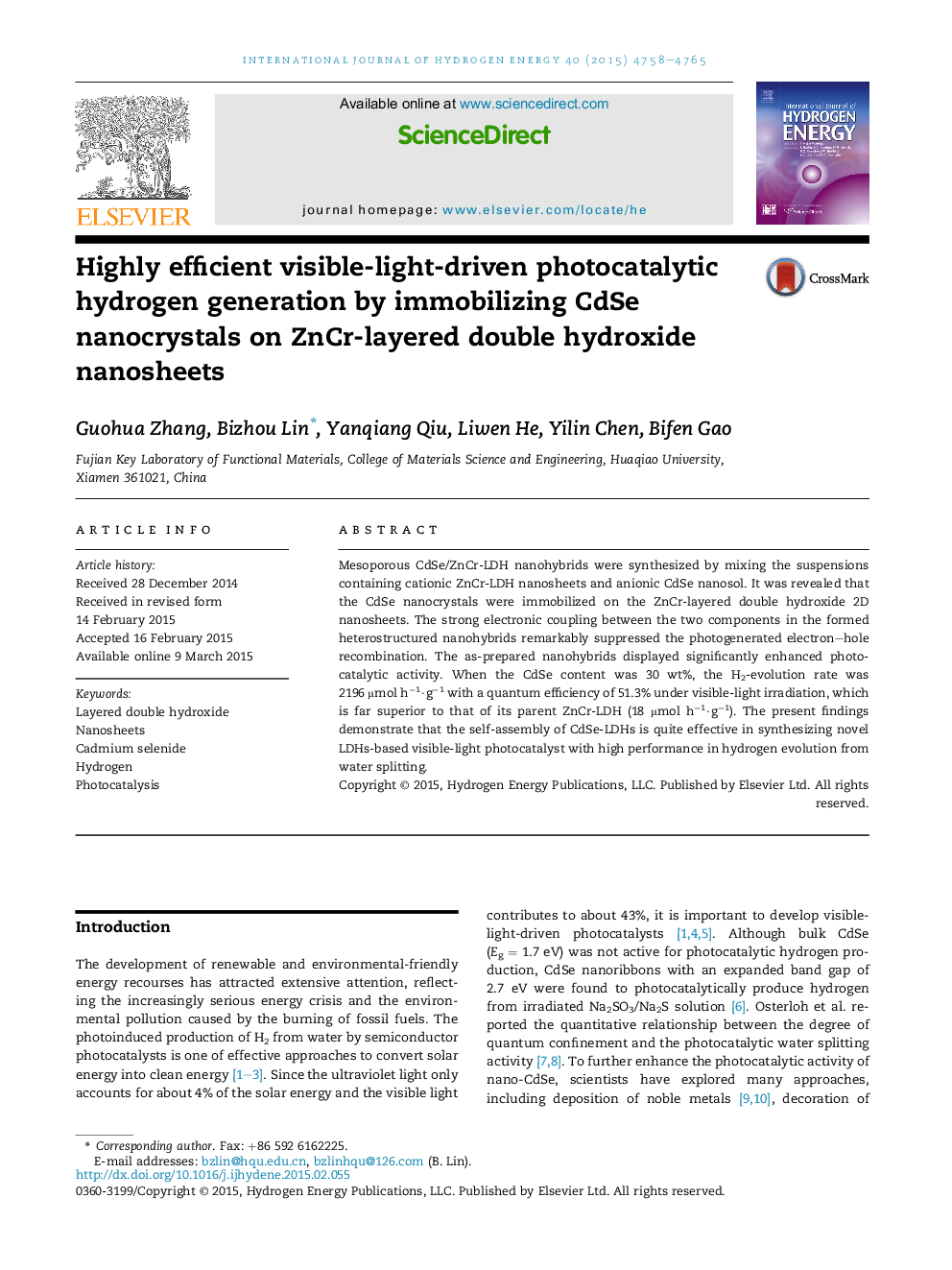| Article ID | Journal | Published Year | Pages | File Type |
|---|---|---|---|---|
| 1271585 | International Journal of Hydrogen Energy | 2015 | 8 Pages |
•CdSe nanocrystals were immobilized on ZnCr-LDH nanosheets.•The nanohybrids are mesoporous with enhanced surface areas.•The nanohybrids display superior visible-light photocatalytic activity in water splitting.
Mesoporous CdSe/ZnCr-LDH nanohybrids were synthesized by mixing the suspensions containing cationic ZnCr-LDH nanosheets and anionic CdSe nanosol. It was revealed that the CdSe nanocrystals were immobilized on the ZnCr-layered double hydroxide 2D nanosheets. The strong electronic coupling between the two components in the formed heterostructured nanohybrids remarkably suppressed the photogenerated electron–hole recombination. The as-prepared nanohybrids displayed significantly enhanced photocatalytic activity. When the CdSe content was 30 wt%, the H2-evolution rate was 2196 μmol h−1·g−1 with a quantum efficiency of 51.3% under visible-light irradiation, which is far superior to that of its parent ZnCr-LDH (18 μmol h−1·g−1). The present findings demonstrate that the self-assembly of CdSe-LDHs is quite effective in synthesizing novel LDHs-based visible-light photocatalyst with high performance in hydrogen evolution from water splitting.
Graphical abstractFigure optionsDownload full-size imageDownload as PowerPoint slide
